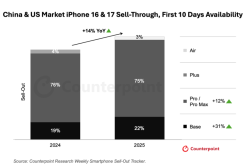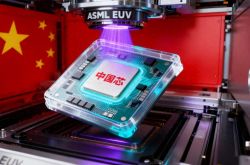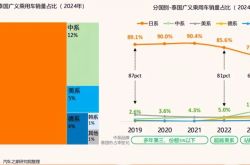Digital Retail: A Time of Radical Transformation
![]() 09/05 2025
09/05 2025
![]() 563
563

As AI starts to unleash ever-greater potential within the retail sector, particularly in reshaping supply-demand dynamics and propelling the evolution of digital retail, the industry is entering a transformative new era. Traditionally, when we discussed digital retail, the focus was on applying digital tools to internal retail processes and workflows, aiming to reduce costs and boost efficiency. Leading digital retail players, such as Youzan and Weimob, have primarily concentrated their efforts in this area. It's undeniable that digitalization has positively impacted retail development. However, relying solely on the existing retail framework without implementing more fundamental changes means digital retail can only yield short-term benefits, failing to bring about a profound transformation of the industry. As 'digitization' evolves into 'digital intelligence,' especially with AI beginning to interact with all retail stakeholders, digital retail is truly entering a transformative phase. Recognizing this profound shift in digital retail and identifying the new direction of retail evolution enables us to uncover fresh avenues for growth amidst this major trend. So, in which direction should digital retail transform? And what new development opportunities can we uncover through this transformation?
The Transformation of Retail's Internal Drivers
When examining the internal drivers of today's retail industry, AI stands out prominently. It can be argued that for any retail player to seize new development opportunities, integrating AI is an indispensable topic. Reflecting on the retail industry's development, we observe that during the internet era, the internal driver was internet-based. With the digital era's arrival, digitalization became the key. Now, in the AI era, the retail industry's internal driver is undergoing a profound transformation from 'digitization' to 'digital intelligence.'
When the retail industry's internal drivers start to transform, the potential for development becomes immense. This is largely because, based on AI, changes in the retail industry are not merely superficial reshapings, as seen in previous internet and digital eras, which did not alter the retail industry's essence or achieve comprehensive integration.
With AI as the internal driver, everything in the retail industry takes on a new look. Under AI's mechanism, internal retail elements have transitioned from internet-based and digital to AI-driven. Catalyzed by AI, the internal elements, processes, and links of the retail industry have undergone significant enhancements. Consequently, the retail industry not only upgrades itself but also comprehensively reshapes its relationships with upstream and downstream sectors.
The Transformation of Retail's External Forms
For retail to truly achieve its objectives, a profound and comprehensive transformation of its external forms is crucial. Traditionally, retail's external forms were either traditional or internet-based. With the AI era's onset, these forms are also undergoing a profound transformation, establishing a new type of connection within the retail industry.
By incorporating AI elements into the retail industry, user experience has been transformed, allowing users to immerse themselves and making their consumption process more perceptible. For users and consumers, this new consumption model undoubtedly enhances their experience significantly. Besides altering user experience, the medium through which the retail industry establishes connections with users has also undergone a complete transformation. We've witnessed the application of intelligent robots, smart glasses, and the emergence of intelligent outfit recommendations, indicating that the external forms through which retail connects with consumers have undergone profound changes.
When the retail industry's external forms start to transform, a new supply-demand relationship will emerge. For the retail industry, connections and transactions based on new external forms will release increasing amounts of new energy, providing fresh impetus for development. When the retail industry's external forms undergo a transformation, it will achieve true unity from the inside out and activate new energy.
The Transformation of Retail's Roles
Traditionally, retail was merely a process of selling goods. Whether in the traditional era or the internet era, this role of the retail industry has seen little significant change. When the internet era became mainstream, especially with the digitization wave sweeping through the retail industry, this traditional role was almost fully exploited. If the retail industry merely maintains this role, its development is destined to become increasingly constrained.
With the AI era's arrival, particularly the gradual emergence of the integration of the digital and physical realms as well as the fusion of the virtual and real as trends, the retail industry's role is undergoing a comprehensive and profound transformation. Overall, the retail industry's role is no longer just about selling goods but has started to take on new roles. On one hand, the new role of the retail industry lies in meeting the digital needs of upstream industrial sectors, continuously improving their production efficiency, and facilitating efficiency enhancement and transformation. On the other hand, the new role of the retail industry lies in meeting the new needs of downstream consumers, continuously satisfying their new demands, and constantly generating new possibilities from retail itself.
In this process, the retail industry is not merely an intermediary but has deeply and comprehensively integrated with upstream and downstream sectors, truly becoming a part of the industry. For the retail industry, this transformation of its role not only allows it to find new development opportunities but also provides a new entry point for the integration of the digital and physical realms as well as the fusion of the virtual and real.
In Conclusion
As AI matures, especially when it begins to be implemented in the retail industry, the retail sector embarks on a transformation and upgrade from 'digitization' to 'digital intelligence.' After undergoing such an upgrade, the retail industry's internal momentum, external forms, and role functions will undergo profound changes. With these changes, new dividends in the retail industry will be activated and released.








